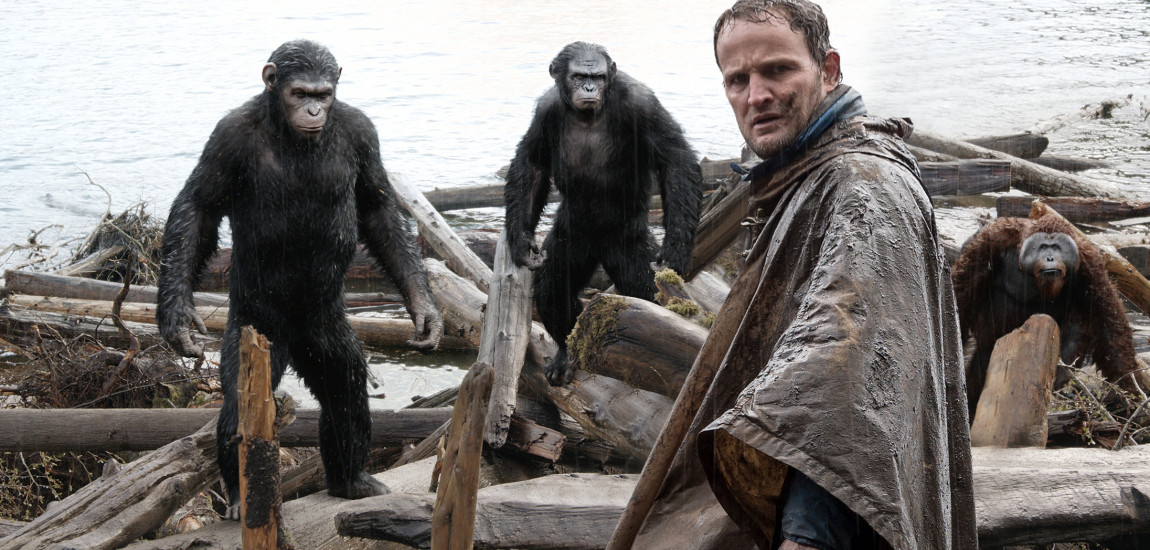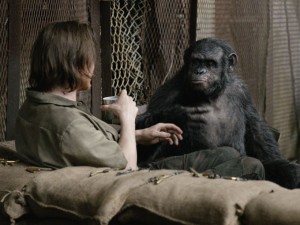
Dawn of the Planet of the Apes

When you’re doing a review for Dawn of the Planet of the Apes it’s appropriate to go into the special effects and not the plot or characters (like you were referring to a Bergman film). Because there’s not a lot going on storywise with the latest installment of the Apes saga, but from the perspective of CGI effects this film is a goldmine.
Just to bring the uninitiated up to par, the original Planet of the Apes was based on a novel by French author and former secret agent Pierre Boulle (also author of The Bridge Over the River Kwai). A landmark movie was made starring Charlton Heston and adapted by Rod Serling in 1968 called Planet of the Apes.
The source material’s twist ending reveals that the narrator of the story is an ape that was reading a message-in-a-bottle narrative that they found floating in outer space. The movie’s twist ending had Heston realizing he was not on another planet but on Earth of the future and the apes had taken over after humanity had destroyed itself.
In the current reboot of the series, of which Dawn is the second movie, humans have been all but wiped out by a lab virus that got loose and have been reduced to living in primitive conditions. The apes have learned to talk and live in a kind of modern day Eden, although since they’ve moved into the John Muir Forest that’s a given.
When the apes talk it’s a combination of grunts that sound like guttural English, hand sign language and just plain psychic communication. Much of this interaction is covered with subtitles. The movie starts and ends with a close-up shot of the eyes of Caesar (Andy Serkis) the alpha ape and a benevolent leader. Right away we’re caught up in the eyes of the characters, these simian creatures being provided with eyes that suggest human emotional response.
This effect was created by studio and on-location motion capture, where the eyes and surrounding muscles of actors like Serkis have sensors that are hooked up to computers that then render them onto live-action albeit animated animals that we see on screen.
When Dawn stays in the special effects mode the film moves with a sort of cinematic grace. When the plot takes over, dueling alpha males trying to decide what’s best for their group, Dawn plummets to the stone age of narratives. The political allegory is thick. At one point Koba even starts the Apes own 9/11 when he burns down their idyllic, verdant compound and blames it on the humans.
One of the best shots in the film is a lengthy take that shows Koba commandeering a tank from the humans and blasting away. The point-of-view is a locked down camera from the rear of the tank. Director Matt Reeves used this Gun Crazy (1950) shot in his previous film Let Me In, when we see a car speeding away from a grocery store and eventually spinning and flipping out of control. Again the perspective is a stationary shot from the backseat of the vehicle.
Dawn of the Planet of the Apes will certainly fuel this summer’s box office, and the geek appeal will raise the rafters. Back here on planet Earth DOTPOTA is just another slick popcorn flick.
- Michael Bergeron


![[Gallery] Blacklight Run Raises Money for Charity, Throws Weird After Party [Gallery] Blacklight Run Raises Money for Charity, Throws Weird After Party](../wp-content/uploads/2014/07/IMG_20140712_212812698-155x110.jpg)

You must be logged in to post a comment Login